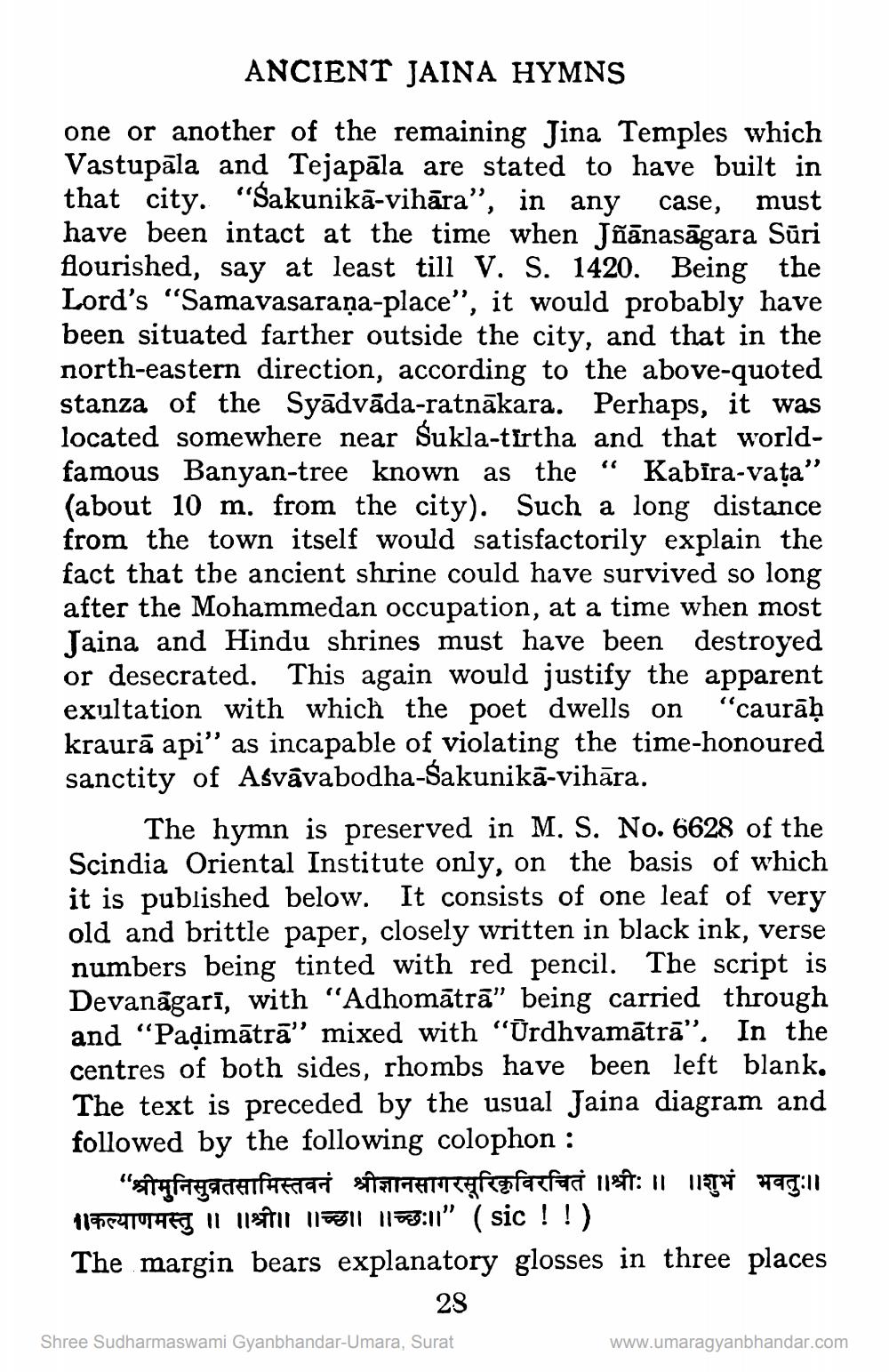________________
ANCIENT JAINA HYMNS one or another of the remaining Jina Temples which Vastupāla and Tejapāla are stated to have built in that city. "Sakunikā-vihāra”, in any case, must have been intact at the time when Jñānasāgara Sūri flourished, say at least till V. S. 1420. Being the Lord's "Samavasaraña-place", it would probably have been situated farther outside the city, and that in the north-eastern direction, according to the above-quoted stanza of the Syādvāda-ratnākara. Perhaps, it was located somewhere near Sukla-tirtha and that worldfamous Banyan-tree known as the “ Kabīra-vata" (about 10 m. from the city). Such a long distance from the town itself would satisfactorily explain the fact that the ancient shrine could have survived so long after the Mohammedan occupation, at a time when most Jaina and Hindu shrines must have been destroyed or desecrated. This again would justify the apparent exultation with which the poet dwells on "caurāḥ kraurā api" as incapable of violating the time-honoured sanctity of Asvavabodha-Sakunikā-vihāra.
The hymn is preserved in M. S. No. 6628 of the Scindia Oriental Institute only, on the basis of which it is published below. It consists of one leaf of very old and brittle paper, closely written in black ink, verse numbers being tinted with red pencil. The script is Devanagarī, with "Adhomātrā” being carried through and "Padimātrā'' mixed with “Urdhvamātrā”. In the centres of both sides, rhombs have been left blank. The text is preceded by the usual Jaina diagram and followed by the following colophon :
"श्रीमुनिसुव्रतसामिस्तवनं श्रीज्ञानसागरसूरिकृविरचितं ॥श्रीः ॥ ॥शुभं भवतुः॥ 117641414FT II llastui 11011 1103:11” ( sic ! !) The margin bears explanatory glosses in three places
28
Shree Sudharmaswami Gyanbhandar-Umara, Surat
www.umaragyanbhandar.com




